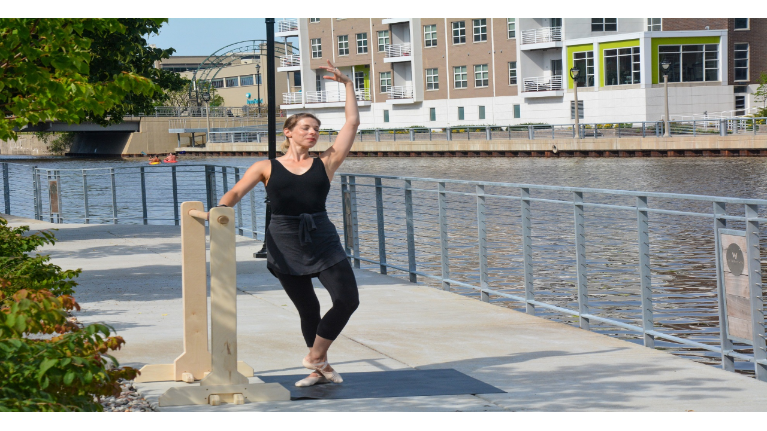MILWAUKEE, Wisc., (SPECTRUM NEWS) -- Smooth brushes of the water, seagulls blabbering, shrieks from party boats and the occasional click of a car locking breeze through the air along the Riverwalk. But if you take a stroll on a Tuesday night by the water you might hear something new: Scuffs, shuffles and clicks.
It's a group of tap dancers on the Riverwalk just off Pleasant St.
Danceworks, a local dance studio in Milwaukee, is getting some fresh air while they break a sweat.

The studio began offering virtual classes after they had to close their doors due to the pandemic. They had drop-in sessions on Facebook Live, but dancers were missing a major aspect of class: Being together.
When it became clear that the pandemic wasn't going away anytime soon, the faculty at Danceworks reached out to their students to see how they were feeling about things. They saw other businesses open their doors and wanted to know if students would feel safe attending a socially-distant class with masks on, or if they preferred to keep things remote.
They got mixed responses, so opted to keep streaming on the internet for some classes, while offering others in person in the studio.
They didn't stop there.
Danceworks is on Water St., making the Riverwalk the studio's backyard. After consulting a medical doctor who is actively involved in the dance community, they decided to try something they had never done before and take it all outside.
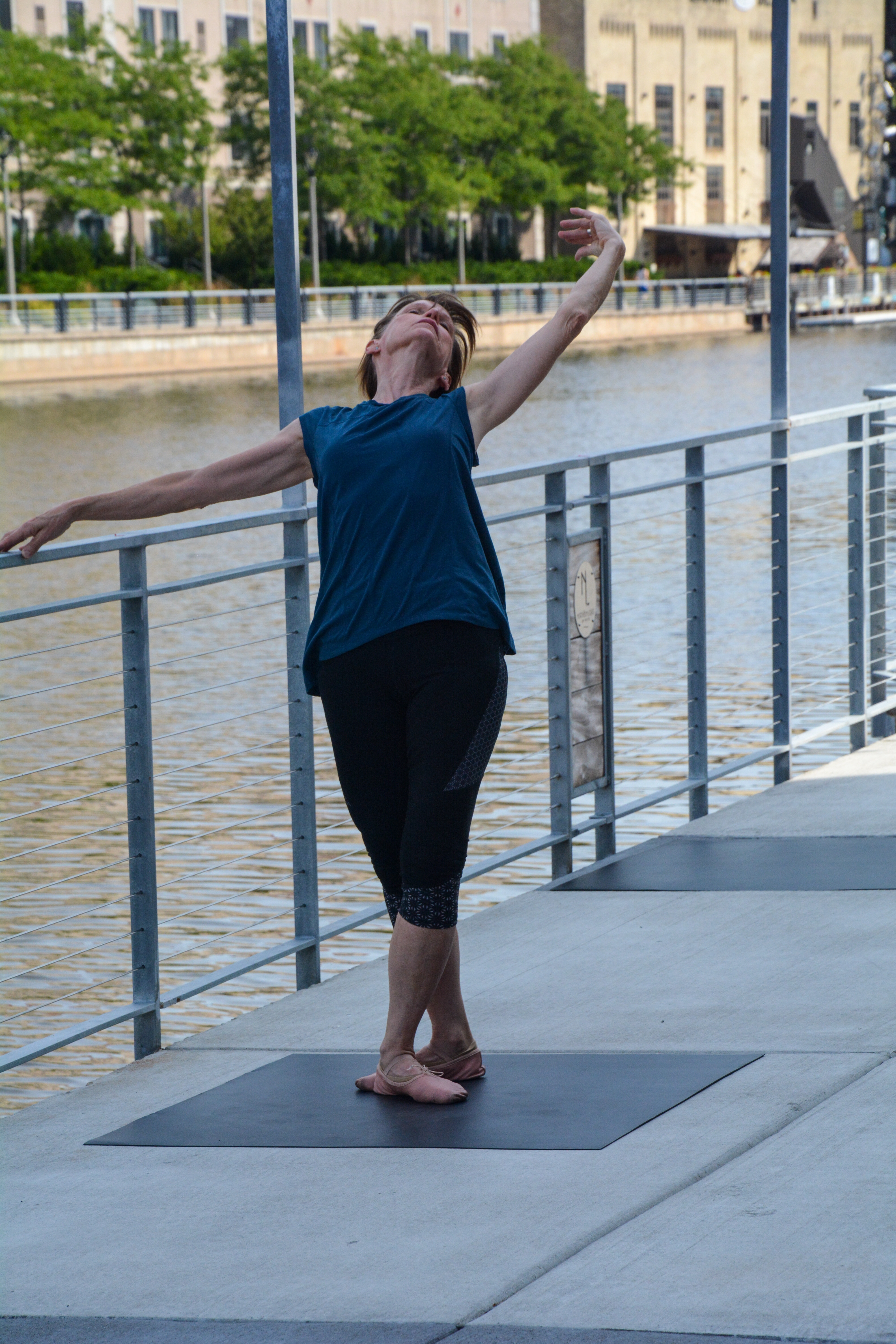
Kim Johnson, Danceworks' director of engagement, is one of the dance instructors teaching class outside. She says that even though they're out in the open air, everyone is still staying cautious. Dancers are spaced out 10 feet apart. This allows for the larger distance that some professionals recommend taking while working out. It also gives students the option to wear or discard their masks.
The concrete and railing are brand new, as they have been repaired in the last year. The railing acts as a ballet barre, and personal floors are brought out so dancers don't have to sacrifice a pair of shoes by being outdoors. Tap boards are provided for tap classes, while small rectangular pieces of marley are used for a class like ballet.
While Johnson says everything is sturdy and safe, going into her first class she still had a few doubts.
"The first time we did it, I was like, 'I hope this will work,'" she says. "You're wearing your mask and there's a little bit of stink from the river, and you're like, 'Oh no. This is gonna be horrible.' But you take your mask off and you're with one another in a really safe way and you hear the sounds of the city, there's the river right there and the birds flying overhead and the sun peeking through clouds and you're moving with people. It's really been a very very special experience"

The classes, Johnson says, are currently only being offered for adults. Students don't have to register for a term, they can simply sign up for a class to try that fits in with their schedules. While there is definitely a base-community that jumped quickly at the chance to come back, she's seen plenty of new faces too. Children's classes continue in other formats.
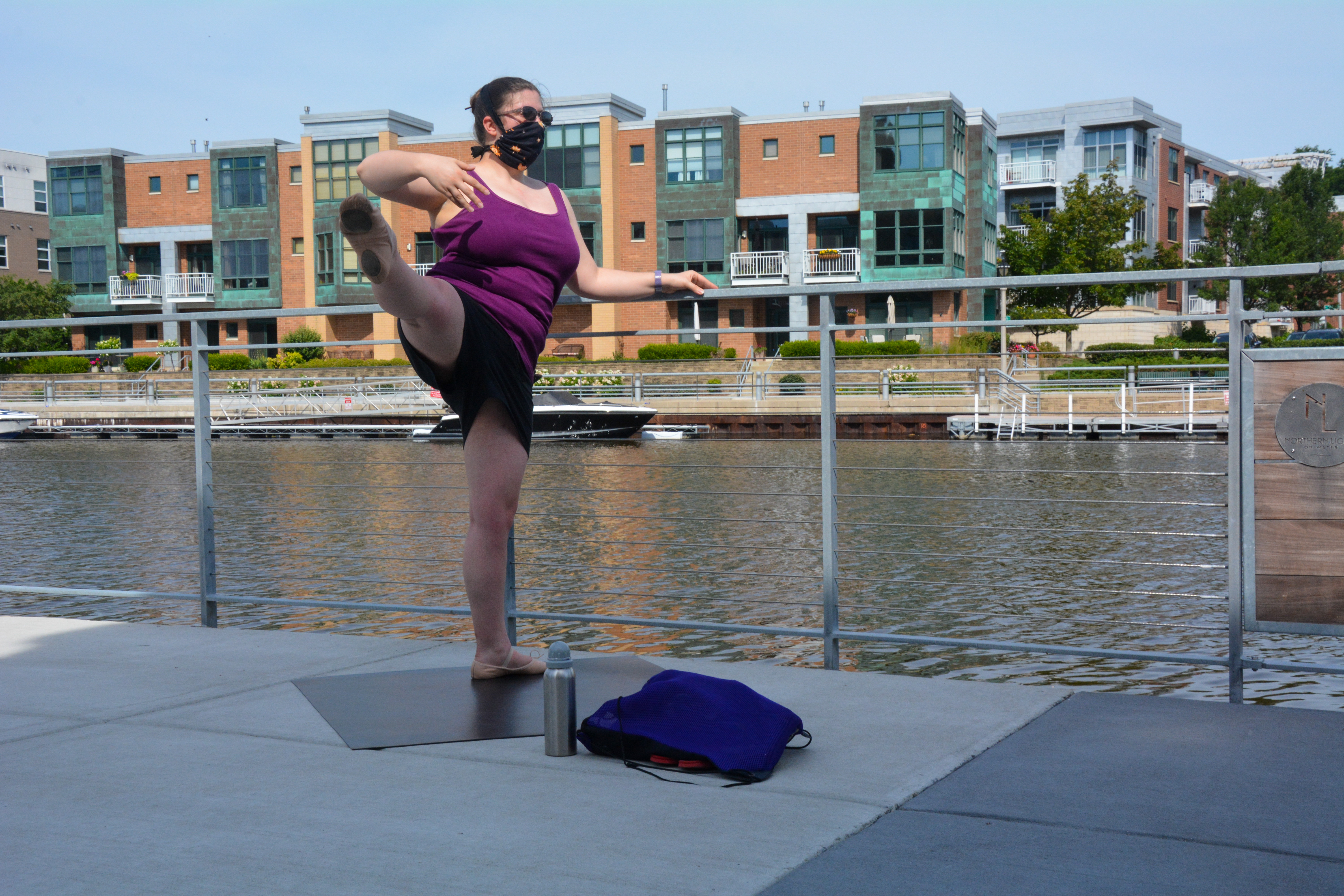
Class schedules are released on a week by week basis. It makes sense, since monitoring the pandemic and how classes are offered is an ongoing conversation among studio staff. While some classes are definitely more likely than not to be a constant, take that Tuesday evening tap session, for example, others are rotating in and out. One Saturday morning there may be a ballet barre, and another an African dance workout.
Amy Brinkman-Sustache, Danceworks' director of education and one of the other instructors offering outdoor classes, says she finds herself adding more and more class options every week.
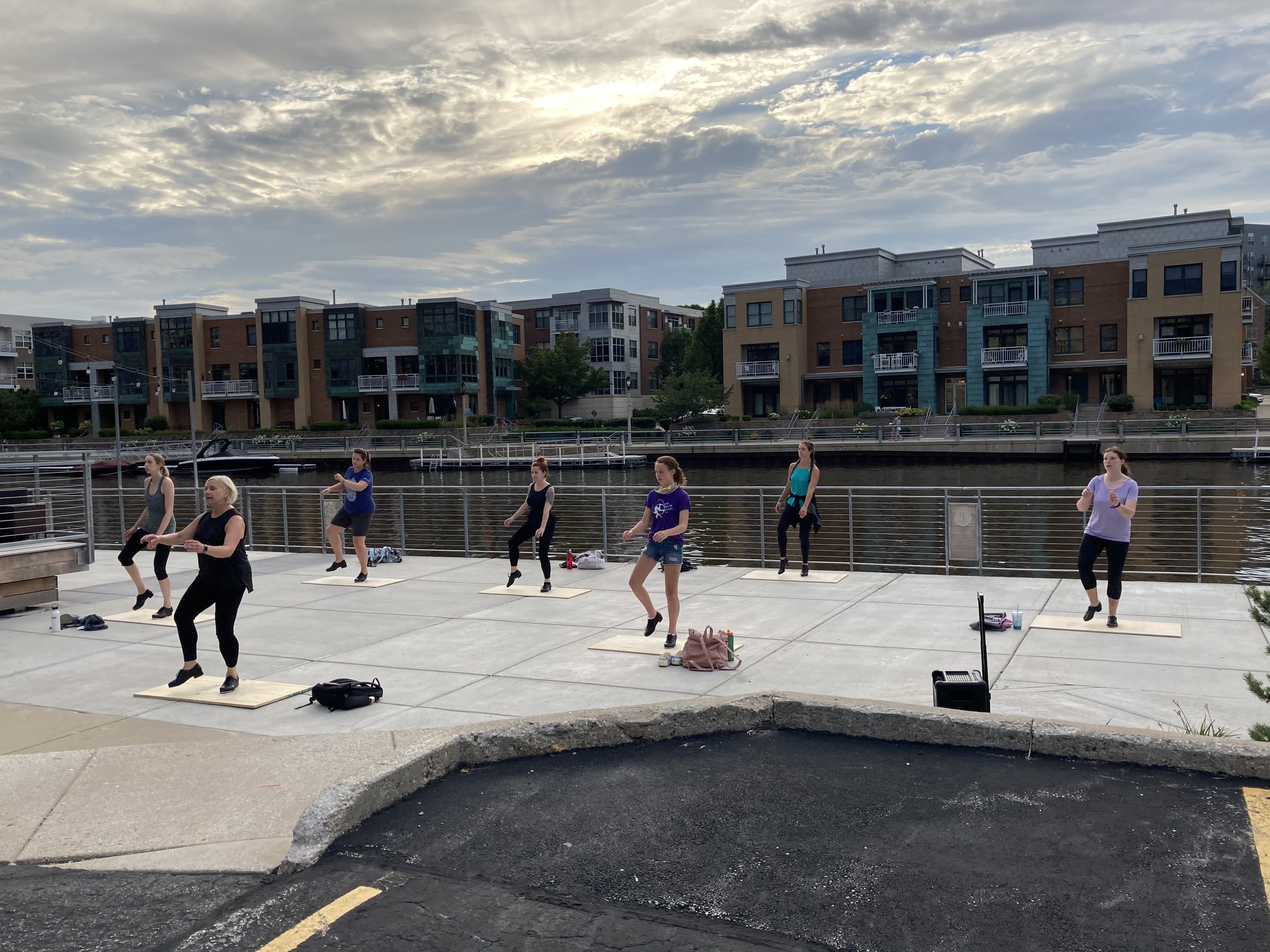
When she outlines the plans for the week, there are quite a few things she keeps in the back of her mind. The time of day is really important for multiple reasons. Danceworks is in a densely populated area downtown. Brinkman-Sustache says instructors use smaller speakers as opposed to industry-grade ones as to not disturb their neighbors. There are a lot of apartments and condos nearby, so they're cautious about how loud and when they play music. Of course, the sound has to be high enough for dancers to hear.
Just as important is the time of day, especially for some of those students who regularly attend 50+ classes. Looking at the schedule, you'll notice that outdoor classes tend to be in the morning before lunch or in the evening after 7 p.m. This way they have the best chances of good weather.
However, if it's too hot to handle, students' comfort is a priority.
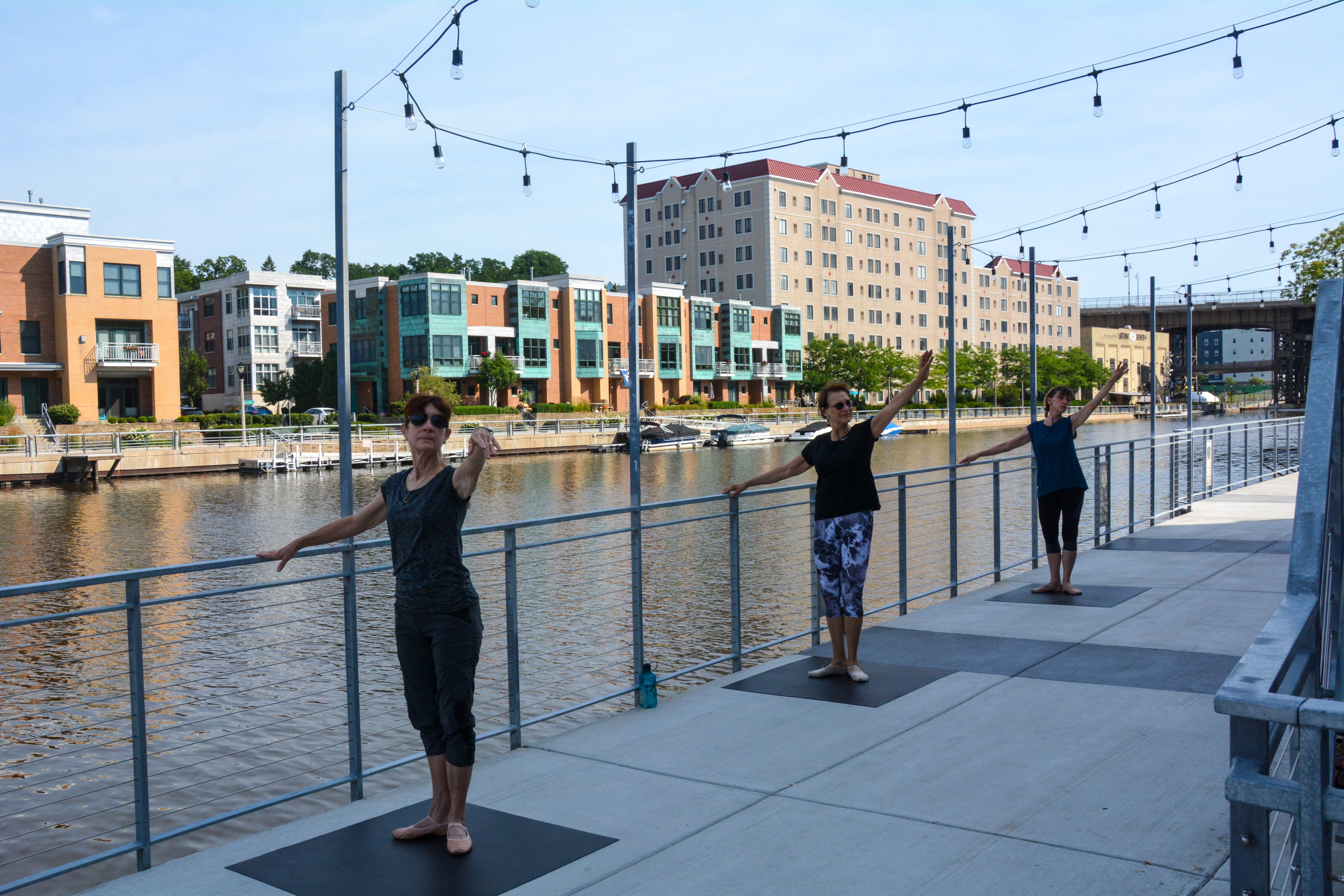
"If they come to the studio and it's 95 degrees outside, they probably don't want to tap outside. We're super flexible to be able to say, 'You know, it's too hot today. We're not gonna be outside.' But when they come and they say, 'It's beautiful; let's go outside,' grab a tap board and we're gonna go outside," Brinkman-Sustache says.
The classes themselves? Brinkman-Sustache says the location isn't the only thing that's changed. The way she choreographs and structures her classes have changed too. For instance, there's no more traveling steps. Everything is done underneath the body.
"When you're doing a step over and over again it's going to travel, probably, one direction or the other," she says. "I will do things in small combinations so you're using whatever step or technique I am working on that particular day, but not doing it over and over."
She says she isn't sure if students notice the class is geared like that, but it has definitely challenged her as a dancer and instructor. She's been able to choreograph very differently for all kinds of classes.
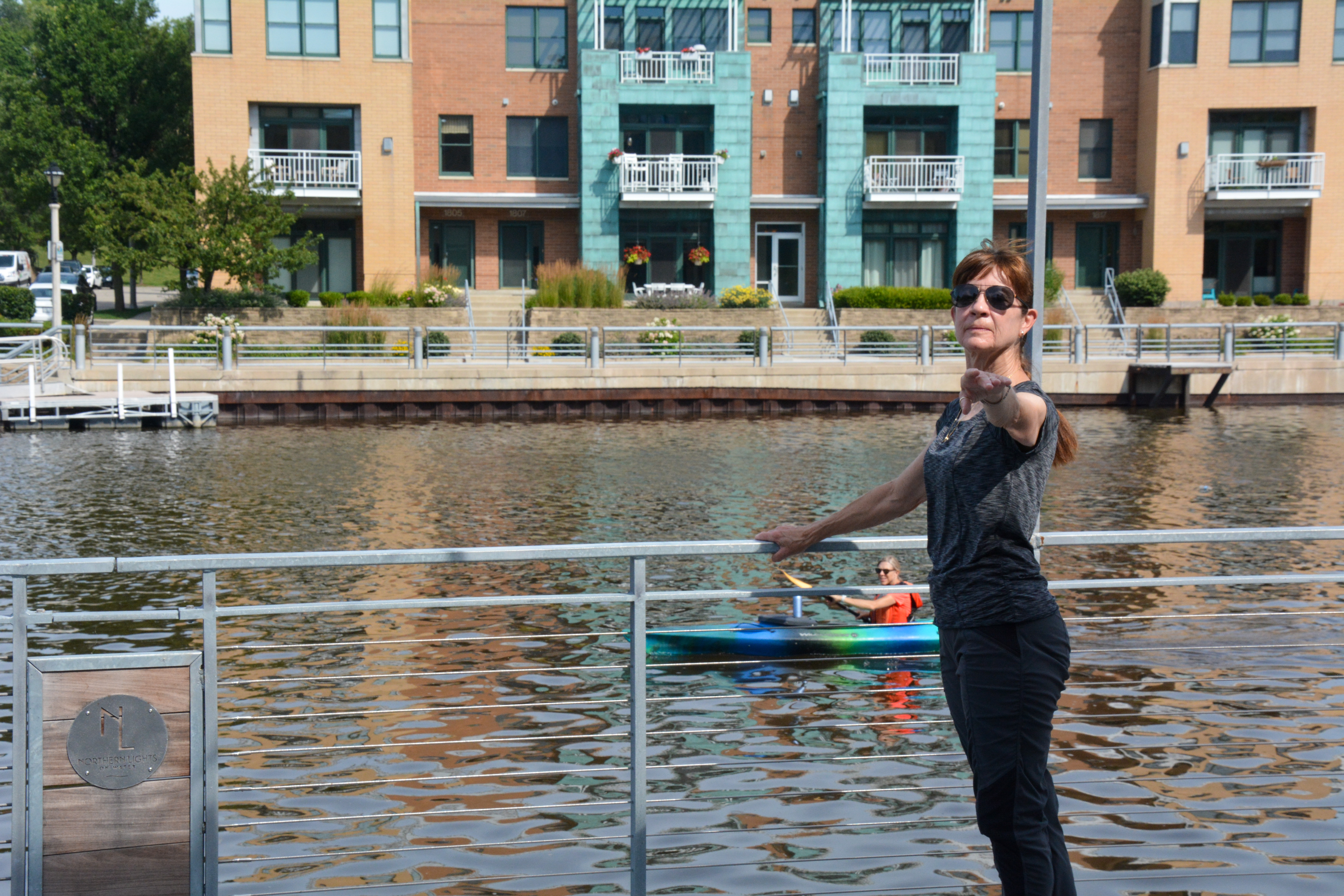
Johnson echoes her co-worker's sentiment that this has been a learning experience. And yet, overall, everyone says they've grown through it and become closer.
"It's been a learning experience for me to learn to connect in a relaxed way," Johnson says. "At the heart of it, we're always trying to look at ways to...(enhance) the joy, creativity and health of the community. What better way to do it safely but with one another? It's a really beautiful blending of...what we can offer."
It's no secret that working out can be a massive physical and metal health benefit. Brinkman-Sustache says she's just happy she's been able to keep people moving.
"Specific to dance, it's really hard to be thinking about other things while you're dancing because if you do you'll notice right away that you'll start to be distracted and you'll mess up. The full concentration for this hour really gives your brain a rest from any worries you might have."
That hour or so of movement is all positive vibes, proving that change can be a good thing.



